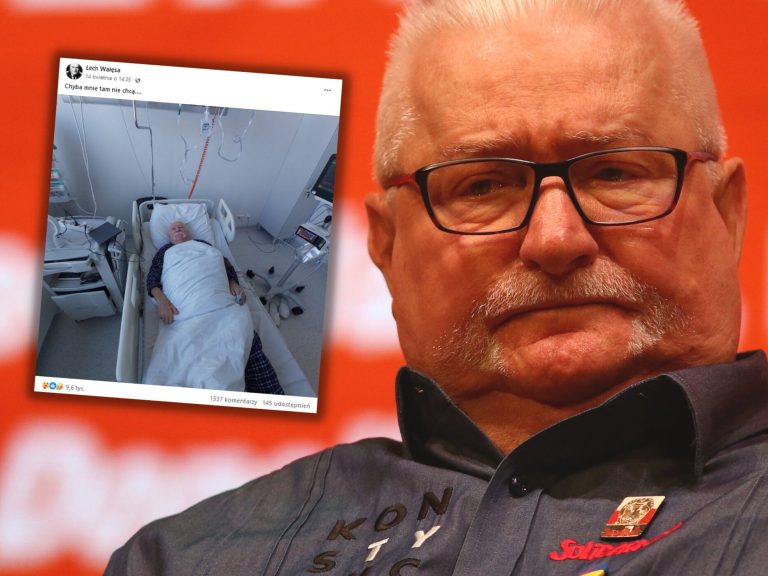Surgical robots are conquering Poland. We know the latest data on the number of operations

More than 60 Polish hospitals already perform procedures assisted by general surgical robots such as da Vinci or Versius. Several dozen more facilities use robotic systems in orthopedics or neurosurgery. In the treatment of the most common male cancer, i.e. prostate cancer, more than half of prostate removal procedures (prostatectomy) in Poland are performed using robots.
Polish surgery is catching up extremely quickly in introducing modern minimally invasive techniques, i.e. robotic systems. The boom in robots in hospitals began in earnest in 2018, continued despite the pandemic and accelerated in 2022. From April 2022, the amounts paid by the National Health Fund to hospitals for performing robot-assisted prostatectomies have been significantly increased. The operation, which in 2021 was valued at PLN 8.7 thousand. PLN (or PLN 11.2 thousand, if the hospital performed at least 100 of them during the year) currently – if it is performed with the assistance of a robot – means almost PLN 31 thousand. PLN paid by the National Health Fund.
It is therefore not surprising that in 2023 alone, another 19 hospitals started performing robotic surgeries. This is not hindered even by the dizzying price of these devices, which ranges from PLN 10-15 million. Hospitals – and not only the largest oncology centers – can find money to purchase robots or obtain funding from various sources, such as local governments, government programs, or EU funds.
2/3 of surgeries are robotic prostatectomies
There was a moment in the history of the development of Polish robotics, in the years 2018-2020, when robots were mainly owned by private hospitals, and patients paid for most procedures out of their own pockets. However, the increase in National Health Fund valuations means that from 2022 there will be very few private operations. In 2023, they accounted for only 7%. all robotic procedures, while two years earlier it was half.
What procedures are performed with the assistance of surgical robots? Their list is constantly growing. Traditionally, surgeries were performed in areas of the body where the surgeon had difficult access, e.g. the pelvis, intestines or head and neck. However, the advantages of robots mean that they can also be used to operate on the heart, lung or hernia. However, the most frequently performed procedure is prostatectomy.
Of all 10.1 thousand robot-assisted procedures performed in Polish hospitals in 2023, two thirds were prostatectomy. The next most common procedures were colon and uterine procedures. All this mainly concerned the removal of tumors located in these organs and was related to the increase in the prices of these three types of oncological surgeries.
Orthopedics and neurosurgery
In parallel with general surgical robots, such as da Vinci or Versius, robotic systems in orthopedics are being intensively introduced into Polish hospitals, primarily supporting doctors in the implantation of knee and hip prostheses, of which approximately 100,000 procedures are performed in Poland every year. The market potential is therefore huge.
At least several manufacturers of implantable prostheses have developed robotic arms, usually with the support of diagnostic imaging and joint mobility modeling, that help surgeons optimally align bones and joints and position the prosthesis. There are already several orthopedic systems in Polish hospitals, such as Rosa, Mako, Cori, OMNIBotics.
Robotic systems have also appeared in neurosurgery. ExcelsiusGPS or Mazur X are used in several hospitals for spine surgery, i.e. stabilization of vertebrae using implanted elements. ExcelsiusGPS is also used for brain surgery, for example implanting electrodes that help locate epileptic foci, where great precision is also required.
Doctors can talk for hours about the advantages of surgical robots. Thousands of articles have already been published, which mainly indicate higher cutting precision, elimination of hand tremors, better visibility for the operator during the procedure, less blood loss by the patient, faster recovery and fewer postoperative complications. Working with the assistance of a robot creates significantly better working conditions for the surgeon, its ergonomics reduce fatigue and, consequently, reduce the risk of error.
The future: treatments without surgeon intervention?
Just a few years ago, a large part of the development of robotics in surgery was the development of the possibility of operating at a distance, by a doctor located in a completely different place than the patient and the robot performing the procedure. Nowadays, however, autonomous robots driven by artificial intelligence are mentioned much more often. Still, despite their name, the systems that everyone admires are only perfect manipulators, managed by surgeons. Meanwhile, manufacturers of general surgical and orthopedic robots collect data from procedures performed using them. The databases are growing, now counting in tens or hundreds of thousands of treatments – all in order to create artificial intelligence algorithms based on the analysis of large amounts of data.
First, they begin to suggest the optimal cutting line to the surgeon and suggest the positioning of tools, but the goals are more ambitious – so that the machine guided by an AI algorithm can perform its movements autonomously. Maybe at first only the simplest ones, for example stitching the skin after surgery or using clamps, but later it will certainly be time for more complex, independent activities. The first reports have already appeared about attempts at treatments performed by the machine independently, without human intervention.
Robotics has become a determinant of the modernity of hospitals and the quality of patient care. If it is known that robotic surgery is more accurate and safe, then every patient has the right to it and can choose treatment in a hospital that performs it. Introducing robots into hospitals is also beneficial from the point of view of the health care system. Due to them, surgical treatment is (indirectly) concentrated. Centers with robots are starting to perform more procedures as patients want to be operated on there. And in surgery, quantity turns into quality – this is a rule that has always been known. For a doctor to perform a procedure well – i.e. optimally, without complications, effectively – he must perform it quite often; specialists say at least once a week. Surgical treatment should therefore focus on the so-called high-volume centers where each operator regularly performs treatments, maintaining and developing their skills.
Robotics leaders in Poland
On the robot map of Poland, it is now possible to indicate hospitals that set the direction of development and set the pace of change. Taking into account only general surgical systems, we already have 5 hospitals that use two systems on a daily basis – purchased or leased. They are also leaders in terms of the number of operations performed. At least two of them are already thinking about purchasing another system.
The leader of Polish robotics in 2023 was the private hospital Śląskie Centrum Urologii UROVITA in Chorzów, which performed all 638 procedures under a contract with the National Health Fund, i.e. free of charge for patients. Despite the name of the facility, almost one third of the surgeries assisted by two Versius robots at the Chorzów hospital were gynecological surgeries. The second place in terms of the number of robot-assisted surgeries in 2023 was taken by the Bydgoszcz Oncology Center. prof. F. Łukaszczyk (500 surgeries), and the third (473 procedures) – the Military Institute of Medicine in Warsaw. In both of these hospitals, the range of robotic procedures is wide, and of course it mainly concerns oncology patients.
The concentration of surgical treatment in large hospitals also means that the doctors working there have the opportunity to perform a large number of surgeries. There are almost ten doctors in Poland who perform over 200 or even 300 robot-assisted procedures a year. However, the Polish record in this unofficial classification has been held for several years by Dr. Paweł Salwa from the Medicover Hospital in Warsaw, who was able to perform 423 surgeries within a year.
However, an analysis of the number of procedures performed in 35 larger Polish centers by over 130 operators indicates significant fragmentation and a disturbingly low number of operations performed by most doctors. The largest number of surgeons (37) performed no more than 20 operations. Another 29 people performed 21-40 procedures. This means that half of the operators performed no more than 40 robot-assisted operations throughout the year. It is worth emphasizing, however, that the operators who performed less than 10 procedures per year (22 people) are mainly surgeons just starting to work with robot assistance. This shows that hospitals invest in education and staff development. Throughout Poland, almost 200 doctors perform procedures assisted by robots, so we can be sure about staff in this field; no wonder, because robots attract young doctors – they capture the imagination, provide the opportunity to use the latest technologies and, at the same time, provide a financially attractive workplace.
Text: Krzysztof Jakubiak/ MZdrowie






